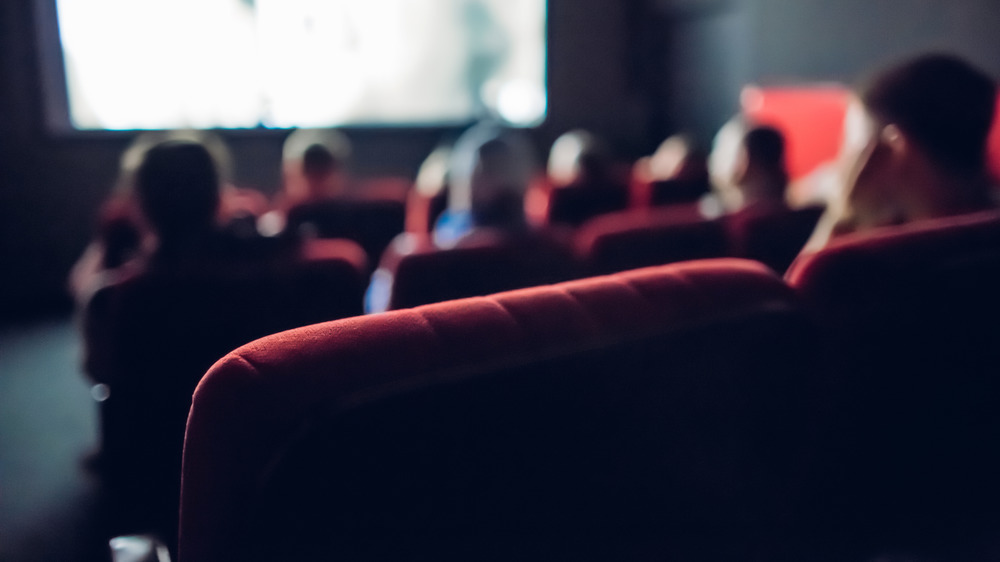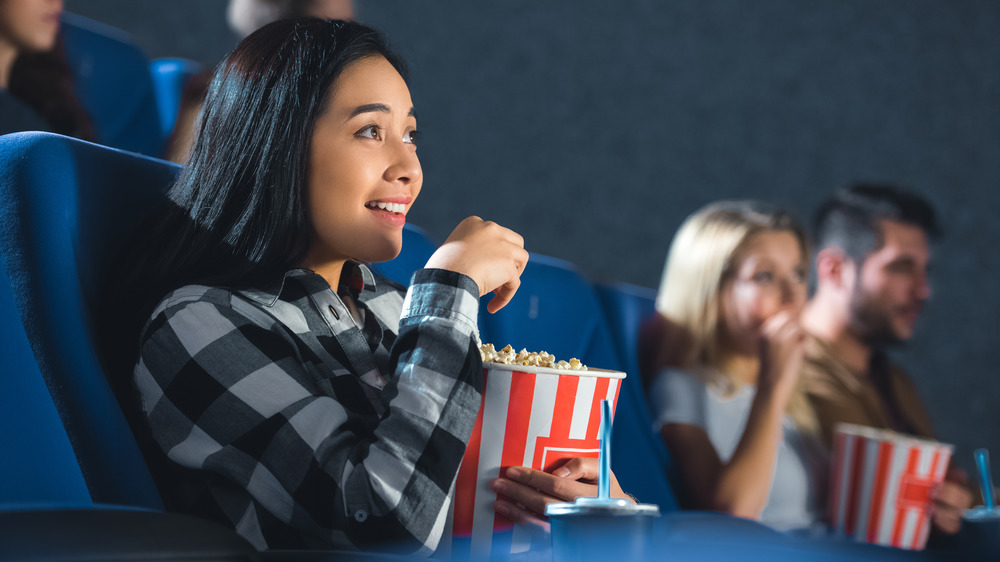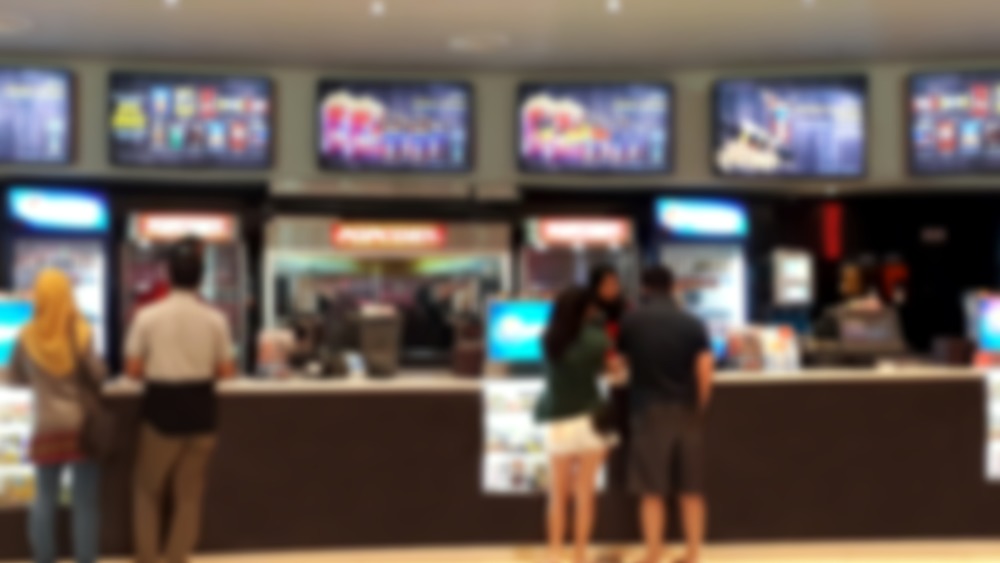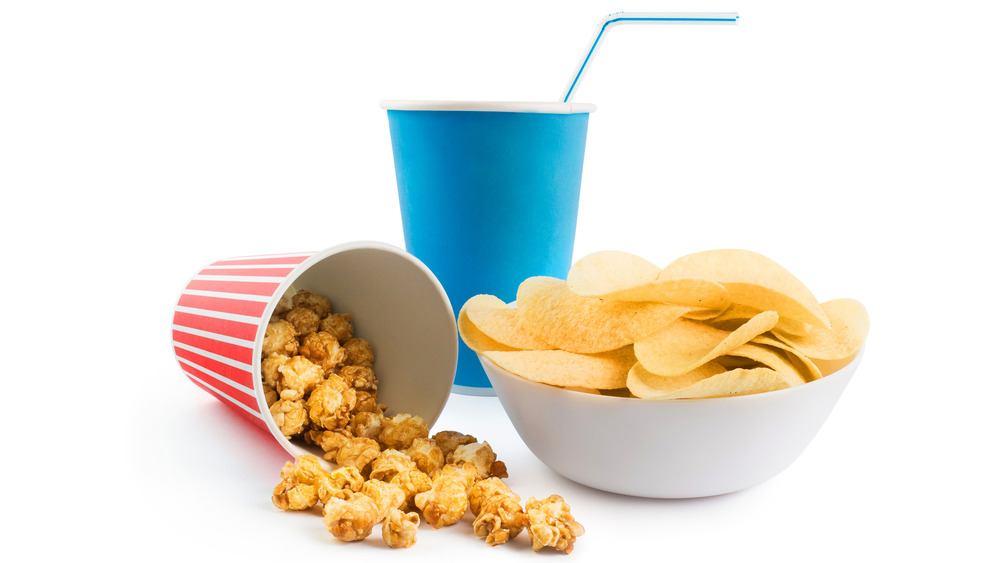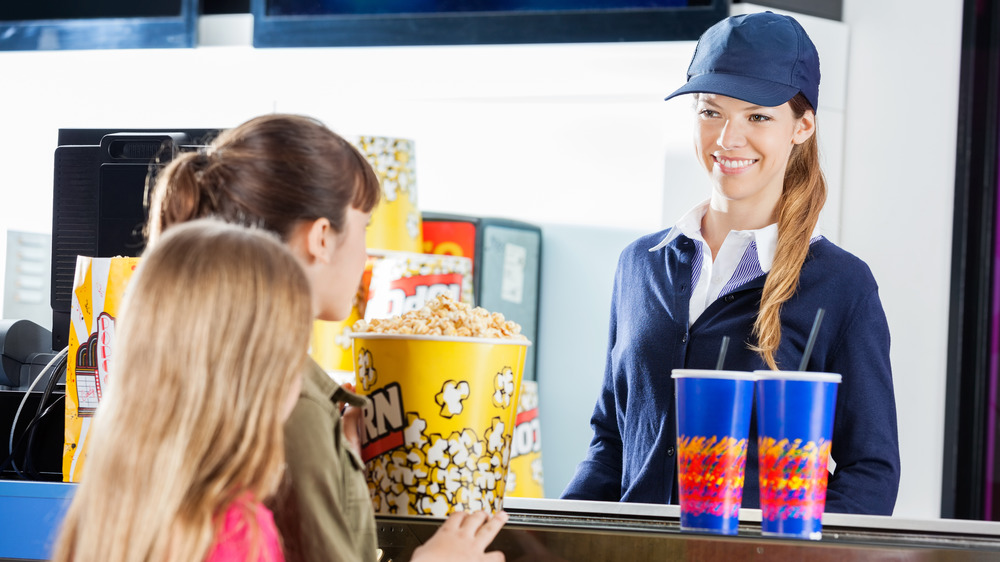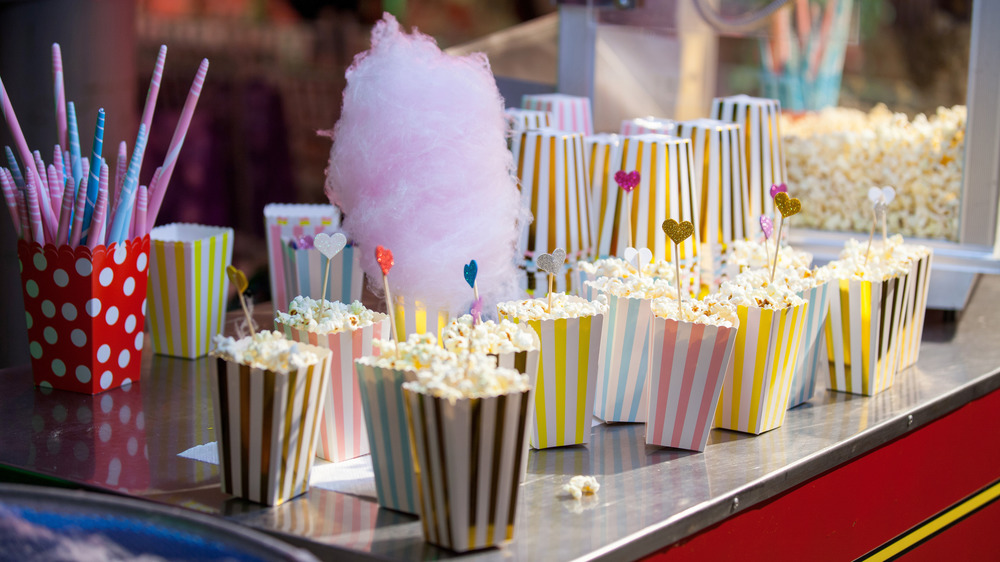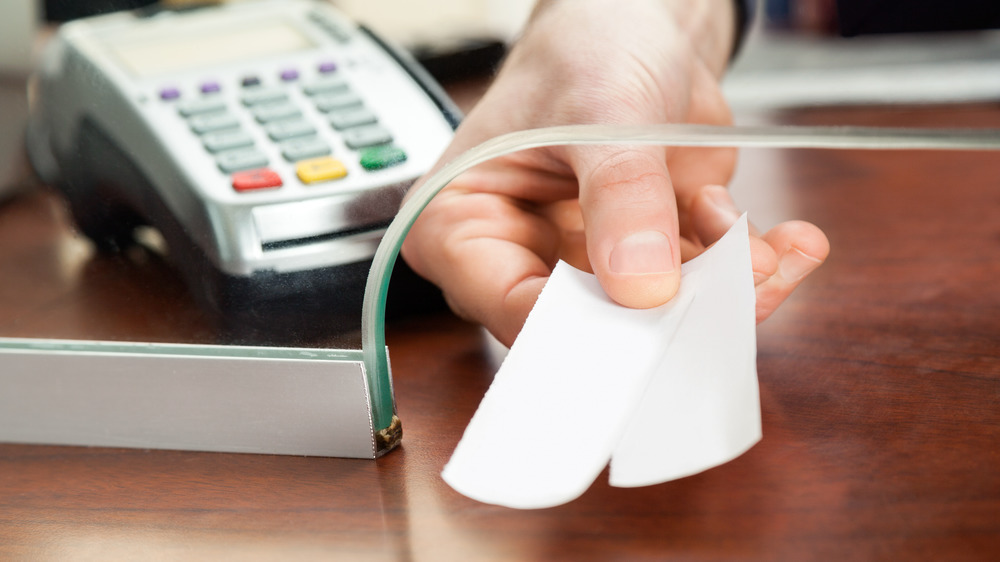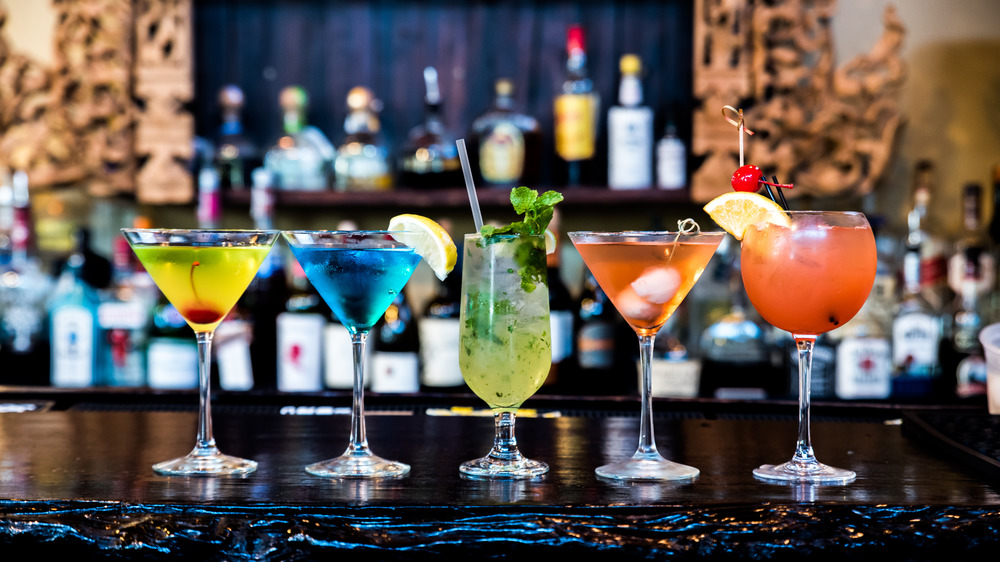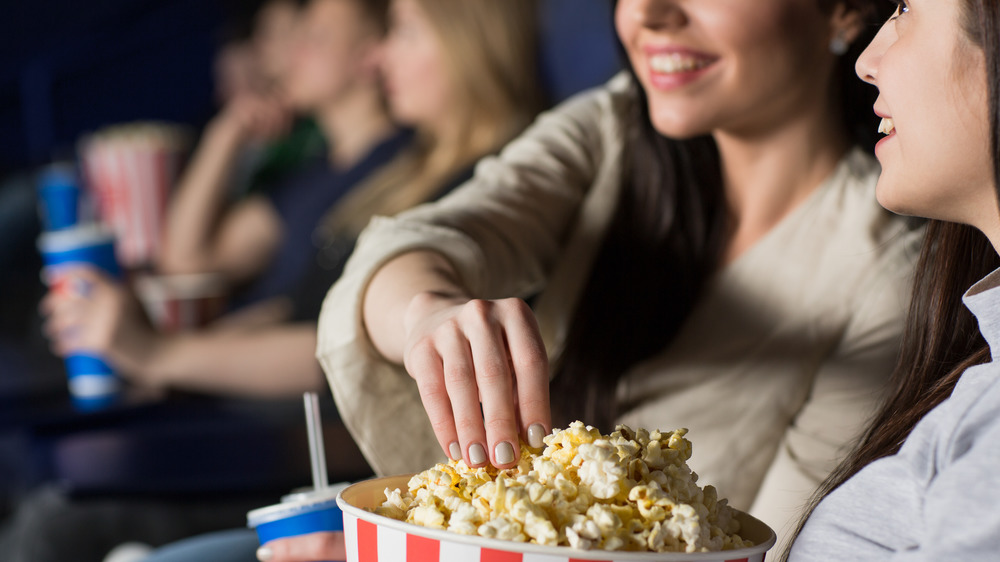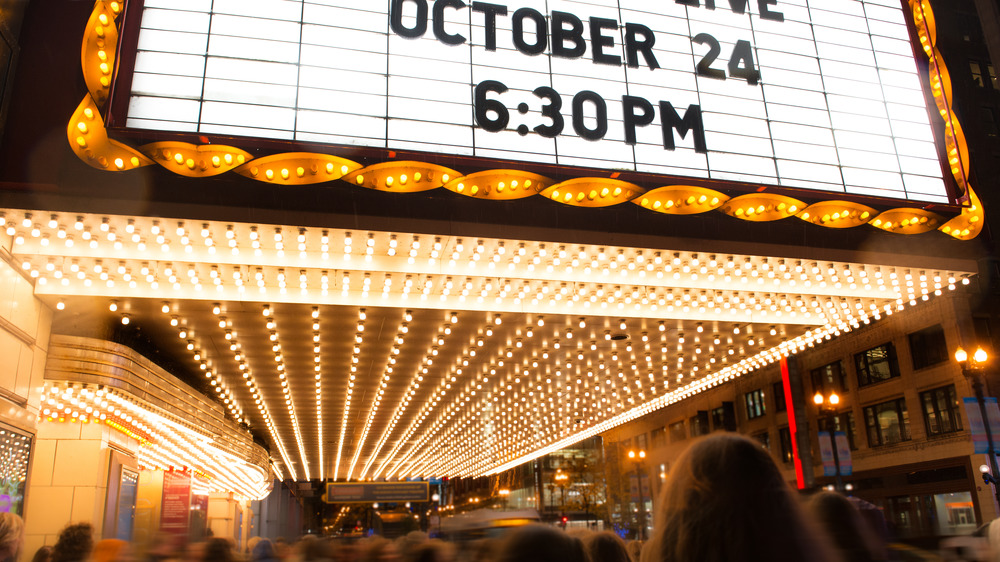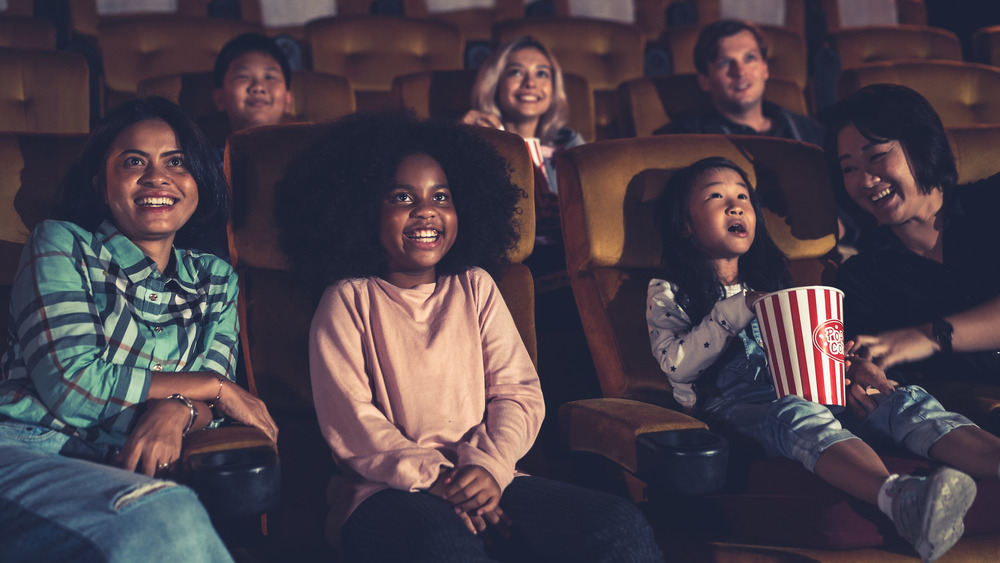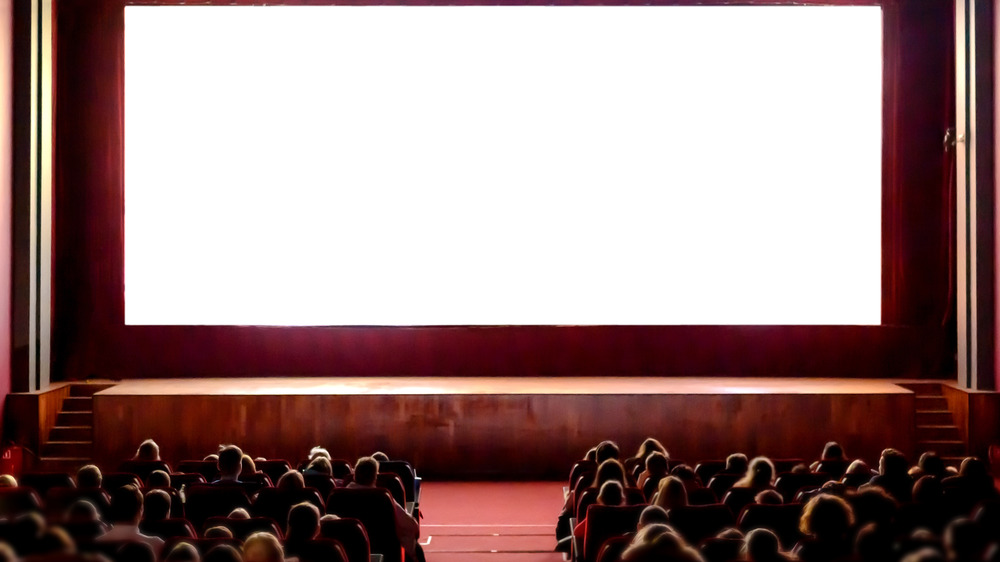Sneaky Ways Movie Theaters Get You To Buy More Food
We all love a trip to the movies, whether it's to catch the latest blockbuster, for date night, or simply as a respite from the week. It's a brilliant way to escape for a few hours and lose yourself in a great bit of entertainment. But the cost of going to the pictures has gone up over the years. And it's not just the ticket prices. If you're like most folks, the experience of hitting the theater isn't complete without a few snacks to munch on while you sit through a feature. Savvy moviegoers will have noticed that cinemas employ a number of crafty techniques to get them to spend more money.
There are several methods movie theaters use to part you with your hard-earned cash, starting from the moment you walk through the door. It starts with the tickets. By 2019, the average cost of a movie ticket reached $9.16, but depending where you live, the price can go up quite a bit. In New York City, a single adult ticket can set you back as much as $20. Tickets aside, it's the concessions where cinemas make their money, so it's no small wonder they'll do everything they can to get you to splash out more on snacks. Let's dive into the tactics movie theaters use to get you to buy more food.
Movie theater concessions are expensive
Anyone who's ever gone to the flicks knows how notoriously expensive concessions are. From popcorn to that massive box of Junior Mints, or even a regular-sized pop, each item is outrageously marked up compared to buying the same snacks elsewhere.
But why do movie concessions cost so much? Here's the skinny: it all comes down to profit margins. Theaters pay studios to show their films, which means most ticket sales earnings go straight back to the studio. These figures range from 60 percent to even 70 percent. To make a profit, theaters must look to other avenues. The answer? Food, of course. Unlike ticket sales, theaters keep 100 percent of concession sales, which can represent up to 85 percent of a theater's profit.
You've seen it yourself — a small popcorn and soda will set you back around $10 or more. While the exact figure for how much it costs movie theaters to make popcorn remains a trade secret, Richard Mackenzie, a UC Irvine professor who wrote a book on the subject, suggested it costs less than 10 cents per ounce for theaters to pop popcorn. Other factors also figure into pricing, like the cost of cleaning up once a showing is over and operating overheads.
While it's undeniably annoying to pay more for inexpensive eats, the profit margins theaters make on concessions actually help keep ticket prices down. Thanks to the money made on selling movie munchies, the average cinema can avoid sky-high ticket prices to cover their operations costs.
Movie theaters engage in price discrimination
Those gigantic tubs of movie theater popcorn and sizable sodas are another trick used by theaters to get you to spend more at the movies. Price discrimination is the selling of a single product at different prices aimed at various groups. Take ticket prices. Children and seniors have less disposable income than the average adult. They're also less likely than adults to hit the theater, so cinemas can charge more for adult tickets. You'll also see how see picture houses charging more on the weekends, or more specifically, offering discounts during the week — however you want to look at it.
This tactic carries over to the concession stand as well. Once they have you in inside the movie theater, they have a monopoly on how much they can charge. Theaters know there will be folks willing to spend more once they're in the theater, too. This brings us to the next tactic.
The lure of the combo deal
While a combo meal from a movie theater concession stand may seem like a good deal, more often than not, it isn't. Two-for-one specials, free upgrades, and refills — if you spend a bit more money, you can bag yourself some extras with your combo. But despite the fact combo deals may appear like a good way to save cash, you're likely to end up not getting a great value for your money.
Many combo deals include way more food than most people can consume in one sitting. Both food and money wind up going to waste. Fast-food chains have seen massive success with combo deal promotions, which translate to bigger profits. The same is true for cinemas. While combo deals can save you some cash, it pays to do the math. Often, the savings are minimal compared to if you bought the items separately, so if you aren't confident you're going to eat everything, it might be worth skipping to avoid waste.
Movie theaters strategically place concession stands
There's a strategic layout to a multiplex. As you make your way to the theater, you may find yourself passing by no fewer than two or three concession stands. Bright neon lights demand your attention while stands of sweets and snacks and enormous popcorn machines may make you think twice about your level of hunger.
Thanks to their convenient location in the heart of the movie theater, many folks will hit the concession stand before settling into their seats. After all, it's part of the movie-going experience, and having all those stands dotted throughout the theater makes it easier to indulge. Making sure customers stroll by several concessions stands on the way to the theater is a clever way to entice people to buy snacks — the smells, the lights, the sheer volume of choice, giving patrons ample opportunity to fish out their wallets and load up on nibbles.
Movie theaters use the irresistible scent of food
One of the first things you'll notice upon walking into a movie theater is the aroma of food. It's everywhere — all those concession stands dotted throughout the building means that cinemas are laced with the delicious scent of buttery movie theater popcorn, hot dogs, nachos, and a multitude of other snacks wafting through the air.
The smell of food stimulates the appetite, making it harder to resist passing up on a trip to the concession stand, even if you've already had your dinner. With so many tempting aromas, it's hard to say no to purchasing a snack or two. And movie theaters know this all too well. Once you're inside the building, you have to play by their rules. If you can't resist the allure of those sensational smells (and really, who can?), you'll have to pay whatever prices they charge, which means they can bump up the cost knowing people are willing to spend.
Loyalty programs get you to spend more at movie theaters
Movie theater loyalty programs can potentially save you a few bucks here and there, but they also open you up to spending more in the long run. They encourage people to spend more via regularly advertising promotions, limited-time offers, and specials, getting consumers to go to the cinema more often to make the most of these deals. Download a theater's app, and you'll get the opportunity to order snacks ahead of time, reserve a seat, and so on.
Loyalty programs are a great way for companies to boost customer retention, and multiplexes are no exception. Most loyalty programs offer points systems which can earn you rewards each time you catch a flick. But unless you go to the movies fairly often, those points may expire before you get the chance to use them. Some programs have an annual fee, and of course, you have to spend more to earn any perks.
Some movie theaters offer premium experiences
In an increasingly competitive market, movie theaters nationwide are upping their game to lure people in. With the rise of streaming services, the number of people going to see films in theater (pre-COVID) has been slipping for a number of years. The need for something extra to entice would-be moviegoers is at an all-time high. The solution? Take the experience of going to the movies and make it more luxurious.
Several cinema chains have invested in bars where guests can spend money in the theater rather than at a restaurant or bar. For date night, you can catch dinner and a movie, with some cinemas cutting out the middleman by offering a full multi-course meal. At some AMC locations, you can have artisan flatbreads, deluxe sandwiches, and mac and cheese delivered straight to your seat. Of course, many of those menu items cost more than at your typical restaurant, but they're betting you'll pay more for the privilege of eating while you watch.
Along with premium fare, alcohol is another massive draw. Most moviegoers are above the legal drinking age, making it a smart move — how many of us pour a glass of wine or pop open a beer when watching films at home? While not every cinema has jumped on the trend yet, offering a selection of alcohol has given theaters another small yet powerful revenue stream. As with other concessions, the profit margins for selling booze in movie theaters amounts to some serious cash.
Salty snacks make sure you never skip the drink
Popcorn, chicken wings, nachos, fries, pepperoni pizza. Are you noticing a theme here? These movie bites are all really, really salty. Even if you walk into the theater with plans of treating yourself to nothing more than a small item off the concessions menu, the ultra-high salt content of most movie snacks means you're likely to get pretty thirsty. The very thought of digging into a large popcorn over the course of two hours and not binge able to quench your thirst the entire time isn't especially appealing, and going to the movies is all about having fun.
This is something cinemas are banking on when you step up to the concessions stand. If you're buying a popcorn or some chicken tenders, you'll probably want a drink to wash it all down. But who are we kidding? The salty-sweet marriage of popcorn washed down with a Coke or ICEE is hard to say no to.
Movie theaters capitalize on brand tie-ins
Big blockbuster films are always a strong draw for audiences worldwide. From comic franchises to adaptions of much-loved book series and fast-paced action flicks, dedicated fans will flock to theaters to catch the latest big film. To capitalize on the big-name series, theaters will roll out brand tie-ins to coincide with movie releases. They're well aware that collectible merchandise and branded packaging can lure franchise fans into shelling out a few extra bucks.
This is especially true for blockbusters and movies aimed at children. Some have started selling toys and other souvenirs geared towards getting consumers to spend more once inside the theater. But brand tie-ins aren't just for kids –– not by a long-shot. For those theaters who serve alcohol, it's a simple matter of creating a franchise-themed tipple to tempt the adults or selling limited-edition metal popcorn tins, plastic cups with toppers, and other items to catch the eye of collectors.
Movie theaters slip in ads for food and drinks during the trailers
Seeing food ads can influence whether people hit the concession stand at a theater. It's perfect not-so-subliminal messaging. You're about to sit through 90 plus minutes of a feature, naturally, you'll want something to eat. There have been several studies done on whether seeing advertisements for food and drink can influence our eating habits. A 2010 study out of Yale found that children especially were far more likely to consume more snacks after viewing ads for food. A 2015 study published in Food Research International found similar results amongst adults. The power of suggestion is strong.
And given the setting, it's tricky to resist — the history of chomping down on popcorn at the flicks spans decades. We walk into a multiplex ready and more than willing to score some treats to pair with our movie viewing. Food and drink ads, combined with other tricks on this list just make us that much more susceptible.
Movie theaters make you wait before the feature starts
If you arrive at the movie theater early and get situated in your seat before showtime, you'll be treated to a variety of ads, many of them for food and drink, before the trailers even begin. This sneaky little strategy is yet another method theaters get you to spend money. Showtimes are typically listed between 15 and 25 minutes before the actual start of the film, giving viewers plenty of time to change their minds about picking up snacks.
If we're being realistic, sitting through the same loop of ads while waiting for a feature to start can get tedious, especially if you get there well in advance. People tend to eat more when bored, so that long wait time before the show might drive you to straight to the popcorn. If you've somehow managed to avoid purchasing food on your way to the theater, that prolonged wait time before a film starts is designed to get you back out of your seat and over to the concession stand.
